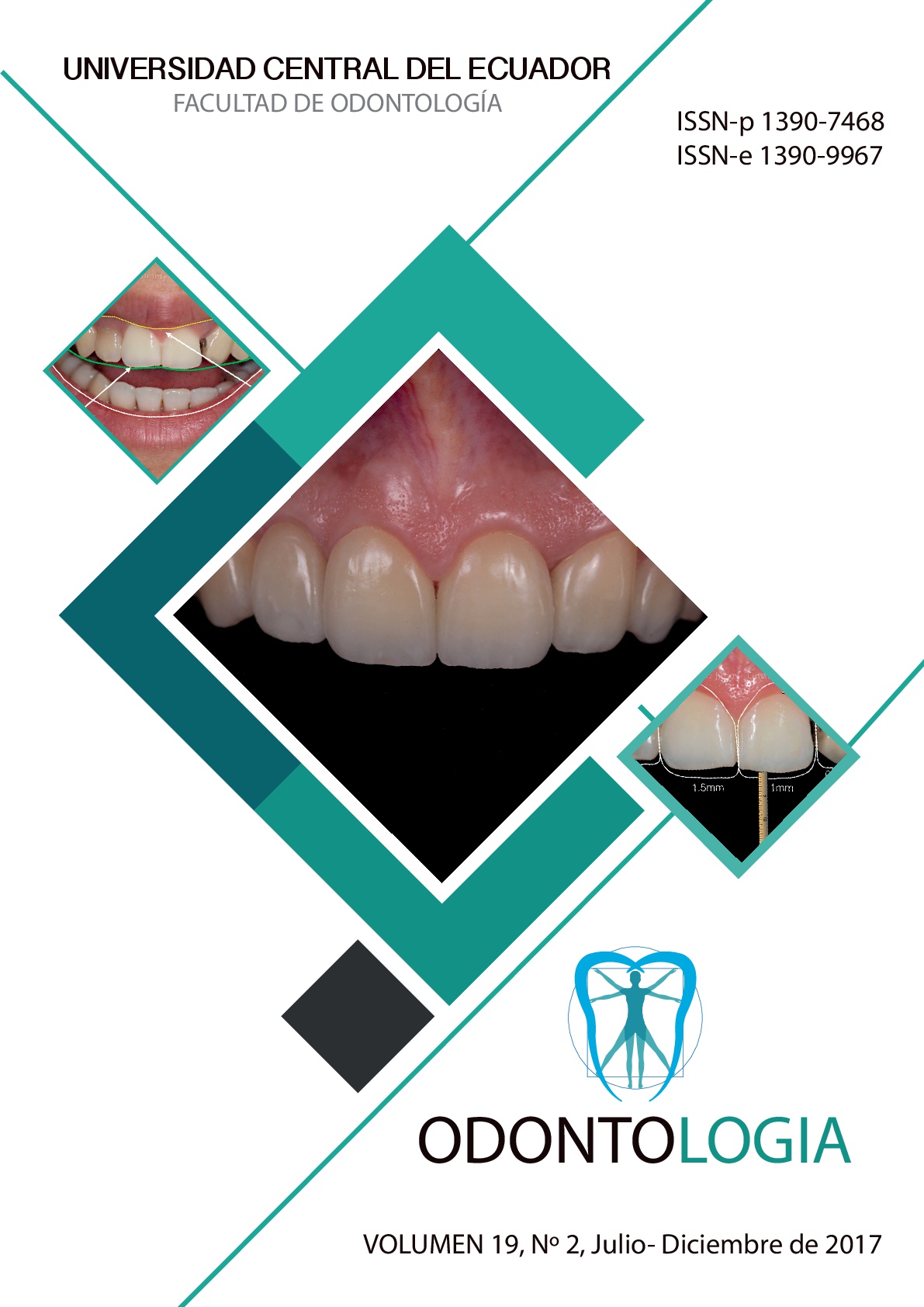Oral health problems profile in infants and preschool children attended at the dental emergency service of a children´s health centre of Brazil
DOI:
https://doi.org/10.29166/odontología.vol19.n2.17-29Keywords:
Pain, Primary teeth, Dental carie, Pediatric dentistryAbstract
Objective: To determine the profile of oral problems in infants and preschool children treated at an emergency service from Clinic of Infantile Specialities / Clinical Baby of the State University of Londrina, Brazil. Materials and method: Retrospective study where 776 clinical histories of patients aged 0 to 72 months, treated between April 2007 and April 2008 were analysed. Data collection included gender, age, place of residence, parental occupation and educational level, reason for consultation, involved teeth and performed intervention. Chi-square test (χ2) and a significance level of 5% were used for variables associations. Results: A greater proportion of male patients (55.5%) attended the service and the main age group was the 0-24 months (27.3%). It was found that 62.9% lived in urban areas and most parents/caregivers had completed secondary school (30.5% parents, 33.8% mothers). The main reason for consultation was caries (38.9%) - pain as main complaint (42.0%) and dental trauma (28.9%). The most affected tooth by caries was the lower second primary molar and, regarding trauma, the upper central primary incisors were the most injured. Interventions varied from endodontic treatment (16.0%) and adequacy of oral environment (15.1%). There was a statistically significant association between mother educational level and reason for consultation (p = 0.001). Conclusion: The assessed health service was necessary and useful. However, oral health problems resolution in the paediatric population in Londrina will only occur after the implementation of reorganised dental services from the currently available.
Downloads
References
Antunes JLF, Peres MA, Mello TRC. Determinantes individuais e contextuais da necessidade de tratamento odontológico na dentição decídua no Brasil. Rev. Ciência & Saúde Coletiva, São Paulo, 2006; 11(1): 79-87.
BRASIL. Ministério da Saúde. Projeto SB Brasil: condições de saúde bucal da população brasileira: resultados principais. Brasília, 2004.
Amorin NA, Silva TRC, Santos LM, Tenório MDH, Reis JIL. Urgência em Odontopediatria: Perfil de atendimento da clínica integrada infantil da FOUFAL. Rev. Pesq. Bras. Odontoped. Clin. Integr., João Pessoa, 2007;.7(3):.223-7.
Sakai VT, Magalhães AC, Pessan JP, Silva SMB, Machado MAAM. Urgency treatment profile of 0 to 15 year-old children assisted at urgency dental service from Bauru Dental School, University of São Paulo. J. Appl. Oral Sci. 2005; 13(4): 340-4.
Tickle M, Moulding G, Milson K, Blinkhom A. Socioeconomic and geographical influences on primary dental care preferences in a population of young children. Br Dental J. 2000; 188(10):559-62.
Naidu RS, Boodoo D, Percival T, Newton JT. Dental emergencies presenting to a university-based paediatric dentistry clinic in the West Indies. Int J Paediatr Dent. 2005; 15(3): 177-84.
Munerato MC, Fiaminghi DL, Petry PC. Urgências em odontologia: um estudo retrospectivo. Rev. Fac. Odonto.,Porto Alegre. 2005; 46(1):.90-5.
Porto RB, Freitas JSA, Bressani AEL, Barata JS, Araujo FB. Prevalência de traumatismos alvéolo-dentários na clínica de urgência odontopediátrica de FO.UFRGS. Rev. Fac. Odonto Porto Alegre. 2003; 44(1):.52-6.
Pires DM, Azevedo EFS, Alves AC, Neto A, Albernaz A. Perfil do atendimento de urgência na clínica de odontopediatria da FOUFBA. Rev. da faculdade de odontologia da UFBA. 1999; 18: 6-10.
Cangussu MCT, Cabral MBBS, Liesenfeld MH. Perfil da demanda ambulatorial infantil da faculdade de odontologia da UFBA nos anos de 1994 e 1999. Ver Fac Odontol Bauru. 2001; 9(3): 151-5.


